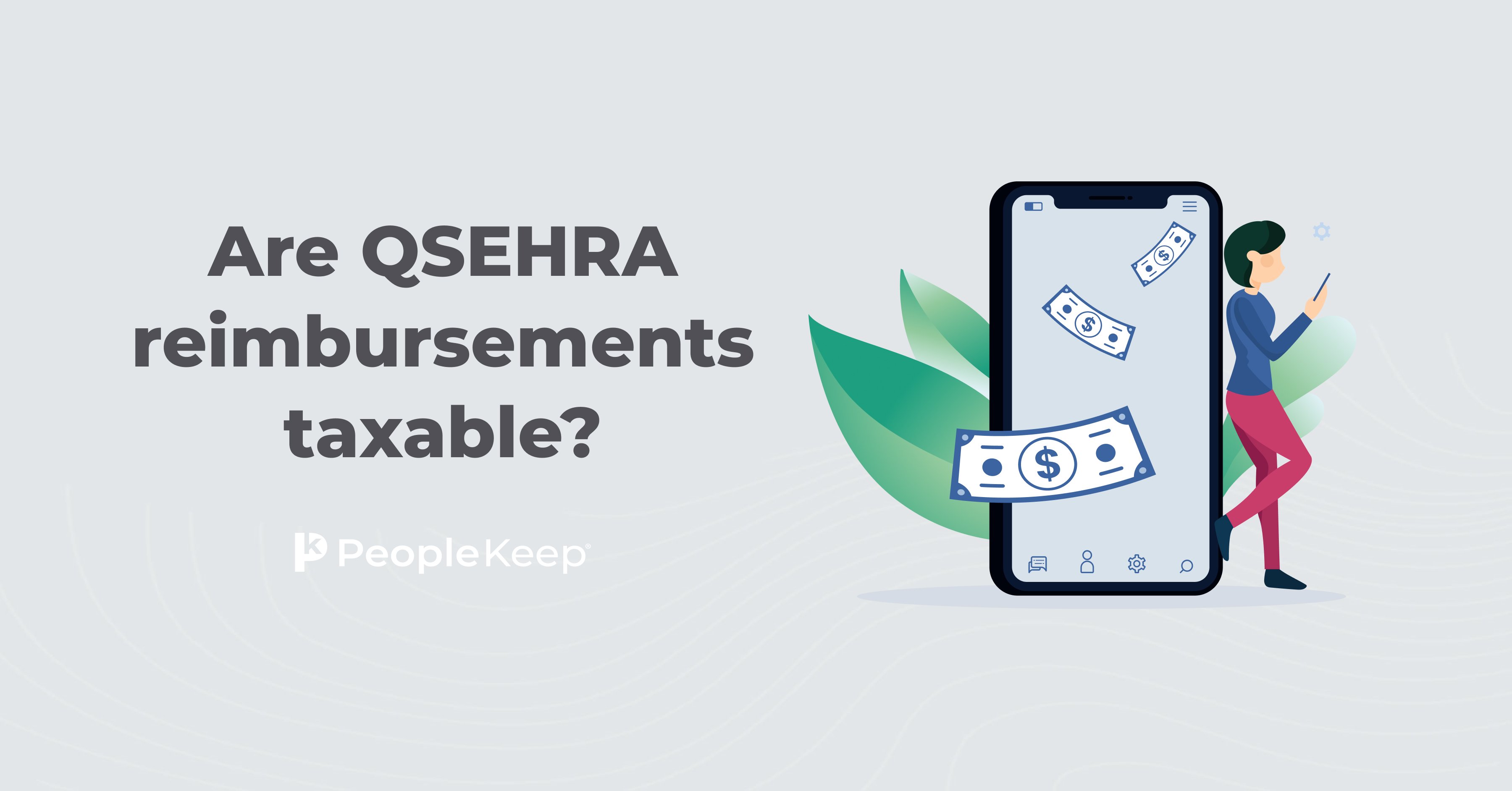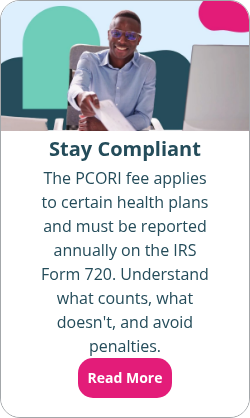What is a Schedule K-1?
By Chase Charaba on November 15, 2023 at 5:00 PM
There are many requirements and tax obligations for business owners, and small businesses are no exception. Every business must report its income to the Internal Revenue Service (IRS). However, some organizations don’t need to pay taxes to the IRS directly.
Federal tax code allows partnerships and S corporations to operate as pass-through entities1, shifting an organization’s tax liability to the individuals with shares or interests in the company. This means only the partners or shareholders pay taxes, not the business.
If you own a business partnership or S corp, you’ll need to report your share of profits, losses, and any deductions or credits to the IRS on your personal return with a Schedule K-1.
This article covers what a Schedule K-1 is, what businesses need to file one, and what information the form requires.
What is a Schedule K-1?
Schedule K-12 is a federal tax form partners, investors, and S corporation shareholders use to report their share of income, deductions, and credits for their businesses. Each individual includes their Schedule K-1 on their personal income tax returns.
Because partnerships and many S corporations pass through their incomes and deductions to their personal tax returns, the organization doesn’t directly pay any federal corporate or business taxes. A Schedule K-1 allows individual partners to track their ownership stake and share of profits or losses.
Beneficiaries also use the form to report any income from trusts or estates to the IRS.
Understanding the different types of K-1s by business type
Depending on the type of income you have or the business you own, the IRS may require you to file different types of K-1 forms.
There are four types of Schedule K-1 forms, each corresponding with a type of business return:
- Form 1065 reports income for a partnership3
- Form 1120-S reports income for an S corp4
- Form 1041 reports income for beneficiaries of trusts or estates5
- Form 8655 reports income from foreign partnerships
The organization files each of these respective forms to the IRS. Organizations use the information in the forms above to create K-1s for each partner or shareholder.
We’ll cover each of these in more detail below. You may also need to fill out a state-specific form depending on your state.
K-1 form for partnerships
If the IRS taxes your business as a partnership, you’ll fill out Form 1065 for the organization and the accompanying Schedule K-1 for each partner. This includes all limited partnerships, general partnerships, and limited liability companies (LLCs) filing as a partnership.
You’ll include your K-1s with your partnership tax return. You and your partners will then use your individual K-1s to report your portion of the organization’s income on your individual tax returns.
Not sure if your organization is a partnership? These tips can help:
- If you own a business with another person but you haven’t incorporated it with any state, you likely have a partnership.
- If you own an LLC with one or more additional partners, and the government doesn’t tax you as a C corporation or an S corp, you have an LLC taxed as a partnership.
- If you registered your business as a partnership with the IRS, they will tax you as a partnership.
K-1 form for S corporations
If your organization is an S corporation, you’ll use Form 1120-S to report each S corp shareholder’s percentage of income, losses, and deductions. S corps must submit an annual report.
You’ll file Form 1120-S with the IRS separately as a partnership does with Form 1065, but you’ll still need to include your K-1 in your personal income tax returns6.
Your K-1 as an S corp shareholder reports the percentage of taxable income, losses, deductions, and credits you’re responsible for from the organization. For example, suppose you sell any business assets for capital gain. In that case, this information should appear on your K-1 so you can report on your tax return.
This is separate from a W-2 you may receive as an S-corporation employee.
K-1 form for trusts and estates
If you’re a beneficiary of a trust or estate, you’ll use Form 1041 to help report any distributions to the IRS on your individual tax return. You don’t need to file Form 1041 directly with the IRS; the trust or estate will. You’ll use your individual K-1 to fill out your tax return.
K-1 form for foreign partnerships
You can use Form 8655 to report any income or losses as part of a foreign partnership.
Things to consider as you complete your K-1
As you start to gather data to complete your partnership or S-corp return and K-1, there are a few things you’ll need to consider.
First, you’ll need to reference any partnership agreements or contracts to determine your organization’s rules. For example, if you have a limited partnership, each member is responsible for their share of debts, obligations, and income based on how much they contribute. Your agreement should explain how to split the share of profits.
You’ll also need to include other income from your organization, such as bond interest and stock dividends.
What information should you include in a Schedule K-1?
Schedule K-1s are one-page documents that you use to help file your tax returns, but they require some prep work. The instructions will look different depending on which form your organization must file. This article will focus on K-1s for partnerships, LLCs, and S-corps.
Form 1065: U.S. Return of Partnership Income
Form 1065 provides the IRS with your organization’s general information, such as business activity, principal product or service category, name, address, and EIN. It also reports the total profits or losses for your partnership broken down by category, such as sales and cost of goods.
On page two of the form, you’ll find a Schedule B form. This tells the IRS whether your organization is a domestic general partnership, domestic LLC, foreign partnership, domestic limited partnership, or domestic limited liability partnership. It also asks if any organization or individual owned an interest of more than 50% of the profit for the year. You’ll also use this form to report any stocks of other organizations that the business owns.
Schedule B also includes a list of yes or no questions about your partnership.
Page four of Form 1065 is your Schedule K (not to be confused with a K-1). This summarizes the distributive share of items for all of the partners combined, such as ordinary business income or losses.
The final page of the form includes an analysis of net income or loss and a balance sheet. There’s also a section to reconcile any income or loss.
You’ll file this partnership return with the IRS along with Schedule K-1s for each partner. The information in this form will help you fill out your Schedule K-1.
Using your completed Form 1065, you’ll include your partnership information, including your EIN, business name, and how you filed your Form 1065 on your Schedule K-1.
Part II is where you’ll provide your information, such as your:
- Social Security number
- Name
- Address
- Role in the partnership
- Share of the profits or losses at the beginning and end of the year. For most business owners, this will be your ownership percentage multiplied by your organization’s total income or loss from Form 1065
Finally, in Part III, you’ll add your share of the income or loss and any deductions or credits.
Remember that you won’t necessarily fill in every section of the forms. Many sections will be blank, depending on your business. Depending on your individual tax situation, you may need to include additional forms or information, such as a Schedule B-1. Consult with the instructions7 for Schedule K-1 or a tax professional for further guidance.
Form 1120-S: U.S. Income Tax Return for an S Corporation
Form 1120-S is similar to Form 1065 for partnerships. This form provides the IRS with general information about your S corp, such as business activity, name, address, EIN, the date your organization was incorporated, and the value of total assets. It also reports the total profits or losses and any credits and deductions by category, such as gross receipts or salaries and wages.
On the second page, you’ll find a Schedule B. This tells the IRS which accounting method you used (cash, accrual, or other) and if any shareholder was a disregarded entity, trust, estate, or nominee. You must also report if the corporation owned at least 20% directly or 50% indirectly of another corporation’s or partnership’s stock, profit, loss, or capital.
Page three includes a Schedule K. This summarizes your shareholders’ pro rata share items, including profits and losses.
The final two pages of the form include a section for balance sheets and reconciliation of your organization's income or loss.
You’ll file this form with the IRS. You can use the information in Form 1120-S to complete your personal Schedule K-1. In Part I, you’ll include information about your corporation, such as the EIN, business name, address, and IRS center where you filed your 1120-S.
Part II is where you’ll include your:
- Name
- Address
- Allocation percentage for the year
- The number of shares you had at the beginning and end of the tax year
Finally, in Part III of the tax form, you’ll add your share of the income or loss and any deductions or credits.
Remember that you won’t necessarily have to fill in every section of the forms. Many sections may be blank depending on your individual circumstances and business. Consult with a tax professional for further guidance on how to complete the form.
When are K-1 forms due?
According to the IRS, organizations should provide K-1s to individuals by March 15 for organizations that use the calendar year as their tax year. Otherwise, they are due to individuals by the 15th day of the third month after the end of the tax year. This is the same date partnership and S-corp returns are due to the IRS.
You’ll then include the information from your business return and Schedule K-1 on your personal federal income tax return.
Conclusion
Filling out your end-of-year business tax returns and providing Schedule K-1 forms to all partners and shareholders is essential to ensure you report your share of income to the IRS and maintain compliance.
Calculating each partner’s share can be complicated and time-consuming. This article serves as an introduction to the topic. You should contact a tax professional to help you with completing the forms and answering any questions you might have.
- https://www.irs.gov/businesses/partnerships
- https://www.irs.gov/pub/irs-pdf/f1065sk1.pdf
- https://www.irs.gov/pub/irs-pdf/f1065.pdf
- https://www.irs.gov/pub/irs-pdf/f1120s.pdf
- https://www.irs.gov/forms-pubs/about-form-1041
- https://www.irs.gov/pub/irs-pdf/f1120ssk.pdf
- https://www.irs.gov/pub/irs-pdf/i1065sk1.pdf
Check out more resources
See these related articles

Are QSEHRA reimbursements taxable?
Confused about the tax implications of QSEHRA reimbursements? Learn whether these reimbursements are subject to taxation in this easy-to-understand guide.

Guide to tax withholdings for stipends and fringe benefits
Learn if stipends are taxable and how tax withholdings work for fringe benefits. This guide covers key rules to help employers stay compliant.

Are health insurance costs tax-deductible?
Wondering if health insurance costs are tax-deductible? Find out the answer to this common question in this blog post.



